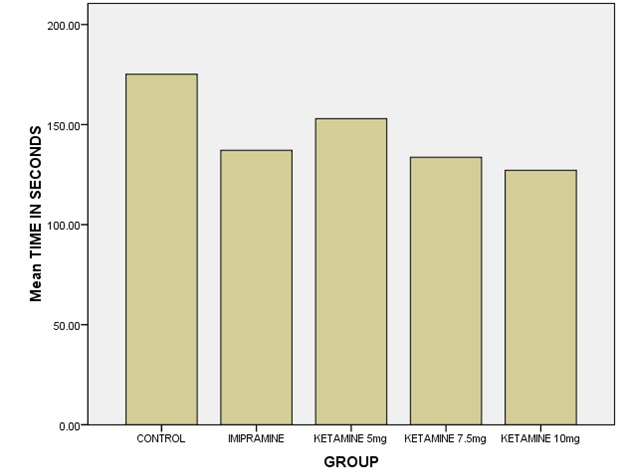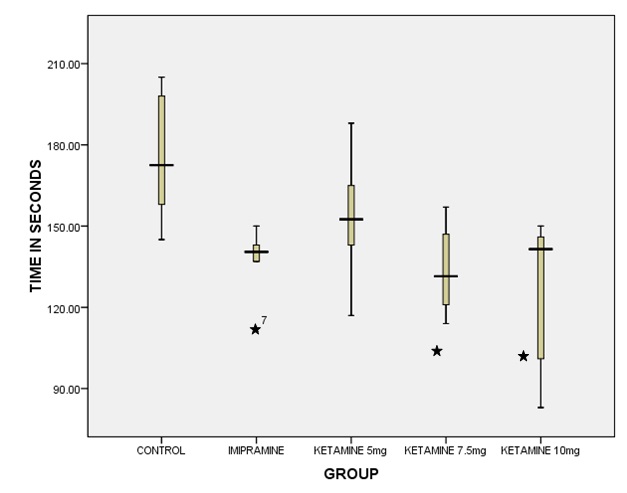Depression refers to a wide range of mental health problems characterised by the absence of a positive affect (a loss of interest and enjoyment in ordinary things and experiences), low mood and a range of associated emotional, cognitive, physical and behavioural symptoms [1]. Depression is the most common mental disorder in community settings, and is a major cause of disability across the world [2]. In 1990 it was the fourth most common cause of loss of disability-adjusted life years in the world, and by 2020 it is projected to become the second most common cause [2].
Normally antidepressants such as SSRI (Selective Serotonin Reuptake Inhibitor) and SNRI (Selective norepinephrine reuptake Inhibitor) are used [3]. It is suggested that chronic stress activates the hypothalamic pituitary adrenal axis (HPA) in certain susceptible people producing changes in central monoamines and increased levels of stress decreased neurogenesis in dentate gyrus of the hippocampal region, thus producing abnormalities in the HPA axis. It is also well documented that the high level of glucocorticoid and glutamate receptors on such central neurons is postulated as mediating the alterations [4]. These alterations are caused by the changes in the neurogenesis and neural apoptotic process. Thus, targeting the effect of antiglucocorticoids and antiglutamate drugs which will yield a possible antidepressant effect.
Ketamine is classified as an NMDA receptor antagonist. A number of evidences and researches have supported the important role of glutamate, an excitatory neurotransmitter, in depression and bipolar disorders. It has been shown that patient with such medical conditions have an elevated concentration of glutamate in the frontal cortex as compared with healthy individuals. Preliminary clinical evidence has been promising, particularly with regard to the N-methyl-D-aspartate (NMDA) antagonist ketamine as a ‘proof of concept’ agent [5]. In our study the antidepressant effect of ketamine was evaluated by its NMDA receptor antagonizing property (antiglutaminergic effect). A single intraperitoneal administration of the SSRIs; citalopram decreased the time of immobility in the mouse FST as compared to the control group receiving normal saline [6].
It has been shown that increased levels of glucocorticoid and glutamate during stress mediates the alterations in hypothalamic pituitary adrenal axis (HPA) leading to depression by causing changes in neurogenesis and neural apoptosis process. It is well documented that across species and across stressors that increased levels of stress decreased neurogenesis in dentate gyrus of the hippocampal region [7]. The potential link between neurogenesis and depression is considered so important is that major depressive disorder is a widespread pathological disorder, affecting 16.2% of US adults at some point in their lifetime [8].
Materials and Methods
Study Design: Randomised controlled experimental study.
Sample Size: Thirty adult male albino mice 14-20 weeks each weighing 20-30 gms would be used for this experiment and are equally divided into five groups. Randomisation is done using a random table. One investigator will record the data and the other investigator is blinded.
Animals: Laboratory bred adult male Albino mice were used for this study. They were kept in the central animal house (SMVMCH, Puducherry, India) and maintained on a standard pellet diet and water ad libitum throughout the experimental period. All testing was conducted within the guidelines of CPCSEA.
Drugs and Apparatus
Drugs used in this study are: Ketamine and Imipramine.
For drug administration: Distilled water.
For the study of antidepressant effect: Forced Swim Test Apparatus.
Methodology
Evaluation of antidepressant activity using forced swim test 30 Adult Albino male mice will be used for this experiment. They are divided into five groups, each of six based on the drug which are given to the mice.
Forced Swim Test
The test is done in a cylindrical glass apparatus of size 10 cm in diameter and 25 cm in height. It has a water column to the height of 10 cm [9].
The animals were made into five groups, each having six animals.
The Group A (control group) will be provided with 0.25 ml of distilled water i.p. to counteract the placebo effect.
The Group B (standard group) will be given with imipramine of 10 mg/kg (i.p.).
The Group C, D, E (test group) will be treated with 5, 7.5, 10 mg/kg of ketamine (i.p.) respectively [Table/Fig-1].
| Group | Drug | Dosage | Route of administration |
|---|
| Group A | Distilled water | - | i.p. |
| Group B | Imipramine | 10 mg/kg | i.p. |
| Group C | Ketamine | 5 mg/kg | i.p. |
| Group D | Ketamine | 7.5 mg/kg | i.p. |
| Group E | Ketamine | 10 mg/kg | i.p. |
The cylinder is filled with water upto 10 cm of height; the temperature of the water is maintained at 25oC [9]. Each animal from the group is administered with drug 20 min before and then subjected to the Forced Swim Test. The usual procedure of test to each mouse involves only six minutes session in which the activity of mouse in the initial two minutes is discarded and the period of immobility in the remaining four minutes will be recorded. The mice were individually forced to swim in the tank, then removed and allowed to dry before returning them to the home cage. The observation of immobility is made in such a way that there can be little and finer movements, for the mouse to keep its head out of the surface of water [10]. This state of immobility provides the state of depression of the animal. The immobility time obtained from the standard and test groups are then compared. Antidepressants decrease the period of immobility.
Statistical Analysis
The data were analysed statistically using one-way ANOVA with SPSS software 12.0.
Results
The sessions on the forced swim test were video recorded as six minute session. The immobility time was recorded using a stop watch and the recording was not made by the principal investigator to avoid bias. Statistical analysis was done using one-way ANOVA with SPSS software 12.0. Mean duration of immobility [Table/Fig-2] in the control group (Group A) was observed to be 175 seconds, whereas it was about 137 seconds in the standard group (Group B) treated with imipramine 10 mg/kg. In the groups (C, D, E) treated with Ketamine 5, 7.5 and 10 mg/kg, the immobility time was 153,134 and 127 seconds respectively as shown in [Table/Fig-3]. Ketamine at 10 mg/kg, 7.5 mg/kg significantly (p<0.05) decreased the immobility time compared to imipramine. There was no significant immobility in a 5 mg/kg dose of ketamine and it shows that there is an increase in antidepressant activity with increase in dosage as depicted in [Table/Fig-4].
Immobility time in seconds in different groups
| Group | Drug Treatment | No. of animals (n) | Dose (mg/kg) | Immobility time (seconds) (Mean ± S.D) | S.E of mean | p-value |
|---|
| Group A | Distilled water | 6 | - | 175± 23 | 9.4 | - |
| Group B | Imipramine | 6 | 10 | 137± 13 | 5.3 | 0.018* |
| Group C | Ketamine | 6 | 5 | 153±24 | 9.6 | 0.246 |
| Group D | Ketamine | 6 | 7.5 | 134±16 | 6.6 | 0.009* |
| Group E | Ketamine | 6 | 10 | 127±28 | 11.5 | 0.002* |
*indicate the significant reduction in immobility time compared with control group (*p<0.05)
Effect of administration of various drugs in mice

Box plot depicts immobility time in a forced swim test n= 6 per value. * indicate a significant decrease in the immobility time p<0.05 (one-way ANOVA)

Discussion
Major depression is a pervasive mood disorder affecting people of all ages. It exhibits not only depressed mood, but also sleep/psychomotor disturbances, low self-esteem, anhedonia, loss of appetite, lack of concentration, etc. In spite of the availability of various antidepressant drugs, depression continues to be a major medical problem.
In our present study, the antidepressant effect of ketamine was compared with imipramine, a commonly used SSRI in depression. The study was done with the Forced Swim Test of mice, a standard animal model predictive of antidepressant activity. In this, when the mice were forced to swim in a water beaker from which they cannot escape, they will adopt a characteristic immobile posture after an initial period of vigorous activity. In such posture they remain floating in water, making only finer movements to keep their head above the water column. It has been suggested that this immobility posture may serve as a screening model for antidepressants [11,12].
A study carried out by Nicole Carrier and Mohamed Kabbaj on the sex differences in antidepressant effect of Ketamine on rats has shown that female rats are more susceptible to the antidepressant effect. Activation of mTOR in the medial prefrontal cortex has been proposed as a critical mediator of the rapid antidepressant actions following ketamine exposure [13].
It has also been shown that ondansetron a 5HT3 antagonist also has anti anxiety effects without sedation in a previous study conducted on mice using the elevated plus maze [14]. Similar studies were done to evaluate the antidepressant effect of ketamine [15,16].
In our study, ketamine (10 mg/kg), produced immobility duration of 88.5 seconds, which is comparatively less than the other groups. We found a significant increase in the antidepressant activity with increase in dosage of ketamine. This significant antidepressant activity (p > 0.05) was observed at higher doses (10 mg/kg) of ketamine as compared to imipramine.
Novel models of understanding the disease could lead to improved pharmaceutical drugs capable of treating depression more efficiently. The neurogenesis hypothesis is one such model. This stated hypothesis is accepted to have two components:
Deficiency of neurogenesis may be culpable for the onset of depression.
Current methods of treating depression may work in large part by fixing an abnormality in neurogenesis hypothesis to the hippocampal region.
One of the fundamental assumptions of neurogenesis hypothesis is that the hippocampal region is crucial to the development and treatment of depression. A number of evidences and researches have supported the important role of glutamate, an excitatory neurotransmitter, in depression and bipolar disorders.
Ketamine is an antagonist of the NMDA receptor mediated by the neurotransmitter glutamate. In our study the antidepressant effect of ketamine is evaluated by its NMDA receptor antagonising property (antiglutaminergic effect). Similarly, from our study, it could be implied that Tramadol acting through a similar mechanism might add a mood elevation property to its analgesic effect. Hence, it can be used as an adjunctive in patients suffering from chronic pain and depression simultaneously .To confirm the NMDA receptor antagonist like action of ketamine further molecular level studies have to be done. Also, other extensive studies to find out other mechanism of actions of ketamine should be done.
Conclusion
From our study, we conclude that ketamine has significant Antidepressant property compared to imipramine in mice. We found a significant increase in the antidepressant activity with increase in dosage of ketamine. Ketamine would provide a rapid relief from depression in treating resistant cases. The limitations of our study were, it is an experimental animal study with a small number of subjects. Hence, more studies with large number of subjects should be carried out to potentiate the results of this study.
*indicate the significant reduction in immobility time compared with control group (*p<0.05)